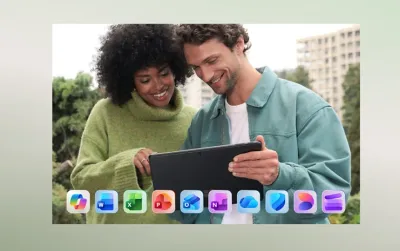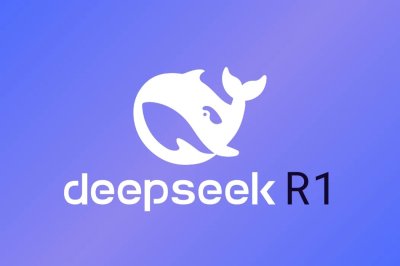Zoom's AI Overhaul: Avatars, Note-Taking, and a Push for Productivity
@devadigax17 Sep 2025
Zoom, the video conferencing giant, has unveiled a significant update to its platform, incorporating several new AI-powered features designed to boost productivity and enhance the overall user experience. The update includes the highly anticipated AI avatars, a revolutionary cross-application note-taking tool, and other enhancements aimed at streamlining workflows and improving meeting engagement. This marks a significant step by Zoom to solidify its position in the competitive landscape of AI-integrated communication tools.
The introduction of AI avatars represents a notable shift in virtual communication. These customizable digital representations allow users to express themselves creatively while maintaining anonymity or simply offering a more engaging alternative to the traditional video feed. The avatars are not just static images; Zoom suggests they will incorporate advanced animations and potentially even emotional responses, reflecting the nuances of the conversation in real-time. This feature has the potential to improve accessibility for those uncomfortable with showing their faces on camera, as well as adding a level of playful engagement to otherwise mundane meetings. The customization options are expected to be extensive, allowing users to create avatars that closely resemble themselves or to express themselves through unique and fantastical designs.
Perhaps the most significant addition is Zoom's new AI-powered cross-application note-taking feature. This tool promises to revolutionize how users manage meeting minutes and action items. While details are still emerging, it is expected that the AI will not only transcribe the meeting in real-time but also intelligently summarize key discussion points, identify action items with assigned owners, and even generate follow-up tasks directly within the user’s preferred task management application. The "cross-application" aspect suggests seamless integration with popular productivity suites like Google Workspace, Microsoft 365, and potentially even third-party task managers and project management platforms. This integration will eliminate the need for manual transcription and organization, dramatically saving time and improving overall efficiency.
The integration of AI into these features goes beyond simple automation. Zoom is clearly aiming to leverage the capabilities of AI to personalize and optimize the user experience. This might include things like intelligent noise cancellation, improved real-time translation, and even the proactive identification of potential meeting conflicts based on users' calendars. The potential for future enhancements is considerable, with the possibility of AI-driven meeting scheduling, automated agenda generation, and even AI-powered moderation features to improve the flow and productivity of meetings.
This update positions Zoom as a significant player in the growing market of AI-powered workplace tools. Competitors like Microsoft Teams and Google Meet are also integrating AI capabilities into their platforms, leading to a fierce competition to deliver the most advanced and user-friendly solutions. Zoom's focus on intuitive design and seamless integration makes its offerings particularly attractive to businesses and individuals alike. However, the reliance on AI also raises questions regarding data privacy and security. Zoom will need to ensure that its AI features are developed and deployed responsibly, with transparent data handling practices and robust security measures in place to protect user information.
The rollout of these new AI-powered features will likely be phased, with some features becoming available to paying subscribers before being offered to free users. Zoom will undoubtedly be closely monitoring user feedback to identify areas for improvement and guide the development of future updates. The success of this update will hinge on how effectively Zoom addresses user concerns, particularly around data privacy and ensures the AI features are not only innovative but also practical and easy to use within the context of daily workflow. Ultimately, the long-term success of Zoom’s AI-driven strategy will depend on its ability to consistently deliver valuable features that enhance productivity and create a more seamless and engaging virtual collaboration experience.
The competitive landscape for video conferencing and collaboration tools is rapidly evolving. By aggressively incorporating AI capabilities, Zoom is clearly attempting to stay ahead of the curve and maintain its leading position. The impact of this update on the overall market remains to be seen, but it undoubtedly represents a significant milestone in the integration of AI into workplace communication. The coming months will be crucial in assessing the effectiveness and user adoption of these new features and how they shape the future of virtual collaboration.
The introduction of AI avatars represents a notable shift in virtual communication. These customizable digital representations allow users to express themselves creatively while maintaining anonymity or simply offering a more engaging alternative to the traditional video feed. The avatars are not just static images; Zoom suggests they will incorporate advanced animations and potentially even emotional responses, reflecting the nuances of the conversation in real-time. This feature has the potential to improve accessibility for those uncomfortable with showing their faces on camera, as well as adding a level of playful engagement to otherwise mundane meetings. The customization options are expected to be extensive, allowing users to create avatars that closely resemble themselves or to express themselves through unique and fantastical designs.
Perhaps the most significant addition is Zoom's new AI-powered cross-application note-taking feature. This tool promises to revolutionize how users manage meeting minutes and action items. While details are still emerging, it is expected that the AI will not only transcribe the meeting in real-time but also intelligently summarize key discussion points, identify action items with assigned owners, and even generate follow-up tasks directly within the user’s preferred task management application. The "cross-application" aspect suggests seamless integration with popular productivity suites like Google Workspace, Microsoft 365, and potentially even third-party task managers and project management platforms. This integration will eliminate the need for manual transcription and organization, dramatically saving time and improving overall efficiency.
The integration of AI into these features goes beyond simple automation. Zoom is clearly aiming to leverage the capabilities of AI to personalize and optimize the user experience. This might include things like intelligent noise cancellation, improved real-time translation, and even the proactive identification of potential meeting conflicts based on users' calendars. The potential for future enhancements is considerable, with the possibility of AI-driven meeting scheduling, automated agenda generation, and even AI-powered moderation features to improve the flow and productivity of meetings.
This update positions Zoom as a significant player in the growing market of AI-powered workplace tools. Competitors like Microsoft Teams and Google Meet are also integrating AI capabilities into their platforms, leading to a fierce competition to deliver the most advanced and user-friendly solutions. Zoom's focus on intuitive design and seamless integration makes its offerings particularly attractive to businesses and individuals alike. However, the reliance on AI also raises questions regarding data privacy and security. Zoom will need to ensure that its AI features are developed and deployed responsibly, with transparent data handling practices and robust security measures in place to protect user information.
The rollout of these new AI-powered features will likely be phased, with some features becoming available to paying subscribers before being offered to free users. Zoom will undoubtedly be closely monitoring user feedback to identify areas for improvement and guide the development of future updates. The success of this update will hinge on how effectively Zoom addresses user concerns, particularly around data privacy and ensures the AI features are not only innovative but also practical and easy to use within the context of daily workflow. Ultimately, the long-term success of Zoom’s AI-driven strategy will depend on its ability to consistently deliver valuable features that enhance productivity and create a more seamless and engaging virtual collaboration experience.
The competitive landscape for video conferencing and collaboration tools is rapidly evolving. By aggressively incorporating AI capabilities, Zoom is clearly attempting to stay ahead of the curve and maintain its leading position. The impact of this update on the overall market remains to be seen, but it undoubtedly represents a significant milestone in the integration of AI into workplace communication. The coming months will be crucial in assessing the effectiveness and user adoption of these new features and how they shape the future of virtual collaboration.
Comments
Related News

Beyond the Mic: Instagram Denies Eavesdropping, But AI's Predictive Power Redefines Digital Privacy
@devadigax | 01 Oct 2025
@devadigax | 01 Oct 2025

Microsoft 365 Premium Redefines AI Productivity, Bundling Copilot to Rival ChatGPT Plus Pricing
@devadigax | 01 Oct 2025
@devadigax | 01 Oct 2025

Wikimedia's Grand Vision: Unlocking Its Vast Data Universe for Smarter Discovery by Humans and AI
@devadigax | 30 Sep 2025
@devadigax | 30 Sep 2025

Google Drive Fortifies Defenses with New AI-Powered Ransomware Detection
@devadigax | 29 Sep 2025
@devadigax | 29 Sep 2025

The DeepSeek Phenomenon: Unpacking the Viral AI Chatbot from a Leading Chinese Lab
@devadigax | 29 Sep 2025
@devadigax | 29 Sep 2025
 AI Tool Buzz
AI Tool Buzz